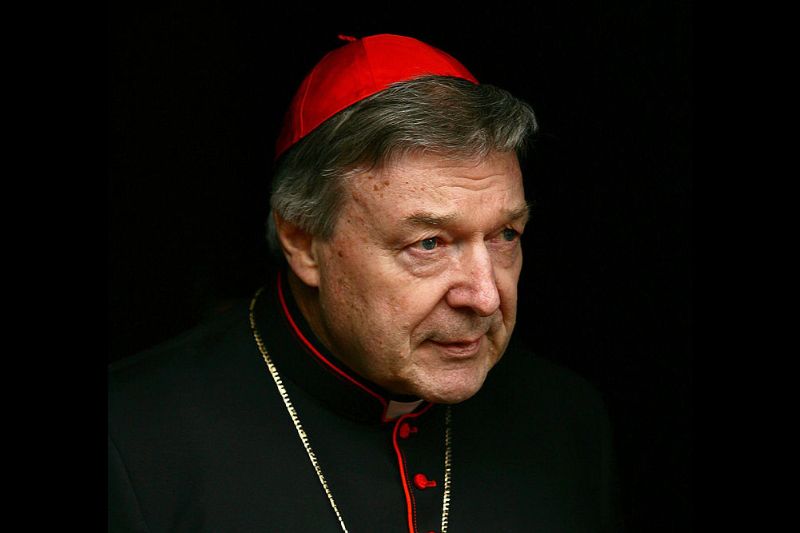The Church in Australia has reached another crossroads. In his final months the late Cardinal George Pell, conservative colossus of Australian Catholics, has publicly waged war on Pope Francis and his vision and legacy in a most deliberate and under-hand way. He did so through his posthumous article in The Spectator (UK) and his earlier, no longer anonymous, memorandum to fellow Cardinals.

Pell will be remembered at a Pontifical High Mass at St Mary’s Cathedral in Sydney on February 2. Thousands of mourners from Australia and overseas and further huge media coverage are expected. According to the Cathedral Dean, ‘Cardinal Pell left a remarkable legacy for the Catholic Church in Australia’.
Yet at the same time the international Synod of Bishops consultation has reached a critical stage. On January 12 members of the Oceania discernment and writing group met in Melbourne as part of this consultation. On February 5-10 the Oceania Assembly of the Synod will be held in Suva, Fiji, attended by Australia’s bishops, many of whom will have come almost directly from Pell’s Sydney Mass. Since October 2021, led by Pope Francis, the church has been fully engaged in this path-breaking exercise, which will conclude in October 2024.
Our bishops would be wise to admit that there is now a gulf in perception and reality between these two events. The Synod is Pope Francis’ prize endeavour and will shape his legacy. Pell clearly did not believe in it and his recent statements, prior to his death and posthumously, have set out to trash both the Synod and the entire Francis papacy as, in his words, a catastrophic disaster. This obvious disconnect is an absurd situation. Australian bishops must continue to defend the Pope and his Synod.
George Pell made it quite clear in his closing publications that he rejected Pope Francis’ vision of a synodal church. He condemned it as a catastrophe and ridiculed the Continental Stage Document (DCS) which preceded the continental assemblies of which the Oceania Assembly was just one. Pell dismissed this document, based on world-wide submissions from the Catholic community, as an ‘outpouring of New Age good will’ and riddled with ‘neo-Marxist jargon’. The first of two international assemblies will be held in Rome in October 2023 to discuss the working document which will emerge from these continental assemblies.
'Are Pell’s attitudes representative of the Australian hierarchy? The probable answer is that he was representative of some powerful conservative elements within the hierarchy, but not of most of the bishops.'

Pell was once the predominant figure in the church in Australia. On synodality, Australia’s Catholic bishops must stand with Pope Francis; there is no doubt that most Australian Catholics are aligned with Francis and his synodal approach to church affairs. They have demonstrated this in their enthusiastic embrace of the fifth Plenary Council of Australia, just completed after four years of nation-wide consultation, including two assemblies. Many Australian Catholics, encouraged by the Australian Catholic Bishops Conference, invested enormous amounts of time, energy and, most importantly hope in this synodal adventure. Yet Pell never supported the Plenary Council and frequently derided its vision and aspirations. He saw expressions of synodality such as the Council as attacking episcopal prerogatives. He has now confirmed, using highly inflammatory language, that he viewed synodal assemblies like the Council as useless, even dangerous, exercises.
Pell’s conservatism was never representative of the views of most ordinary Catholics. The balance of Australian Catholicism was always more moderate and centrist in contrast to his conservative social and political views. Pell was a climate sceptic, unlike Pope Francis who gave impetus to climate action through his encyclical Laudato Si. He was a strong believer in hierarchy and episcopal power and opposed to co-responsibility with lay Catholics in church governance. He was also opposed to equality for women in church governance and ministry. In all these matters, the evidence of public opinion polls, voting and Plenary Council submissions show that he was in the minority.
Yet in a hierarchical system it is the power of the bishops which matters. Are Pell’s attitudes representative of the Australian hierarchy? The probable answer is that he was representative of some powerful conservative elements within the hierarchy, but not of most of the bishops. He even played a role in appointing some of them, within his own archdiocese and across the country, on a ‘like appoints like’ basis.
But he was an autocratic individual by inclination rather than leader of a team, and his episcopal colleagues never regarded him as a ‘team player’. He demonstrated this when he instituted his own Melbourne Response to institutional child sexual abuse in 1996 rather than supporting the collective national program called ‘Towards Healing’. He also broke ranks with his colleagues during the 1998 debate over the Howard government’s GST tax reform when he declared that there was no one Catholic position on tax reform though one had been decided.
Fellow bishops were often intimidated by him. But given the chance to indicate their support for his leadership his colleagues did not elect Pell to represent them as President of the Australian Catholic Bishops Conference. Not only did enough of them not share his extreme conservatism but presumably the majority wanted a more collaborative leadership style than he offered.
Despite this background the revelations of the extent of his disloyalty to Pope Francis, though not out of character, are still shocking. They were expressed with such venom and exaggeration that, if taken seriously, they threaten to undermine the direction of the church in Australia.
They throw a shadow over hopes for a more synodal church. Pell never concealed his dislike for the local Plenary Council. Let us hope that those Australian bishops who admired him and stood with him are not politicking against Plenary Council reforms during the implementation stage of the Plenary Council decrees and the conduct of the Synod of Bishops’ consultation. Once the official mourning period is over, the future of a collaborative and co-responsible church in Australia depends upon discarding Pell’s legacy rather than embracing it.
John Warhurst is an Emeritus Professor of Political Science at the Australian National University and was a member of the Plenary Council.
Main image: Cardinal George Pell.(World Youth Day via Getty Images)